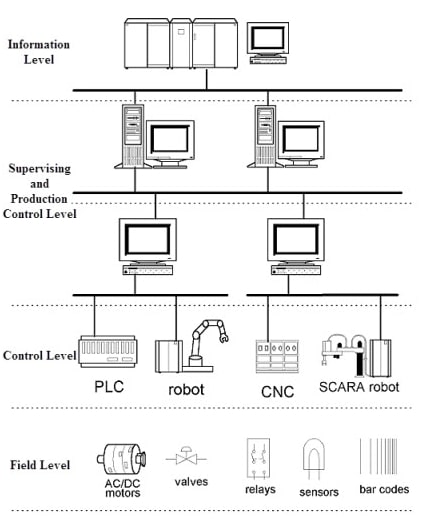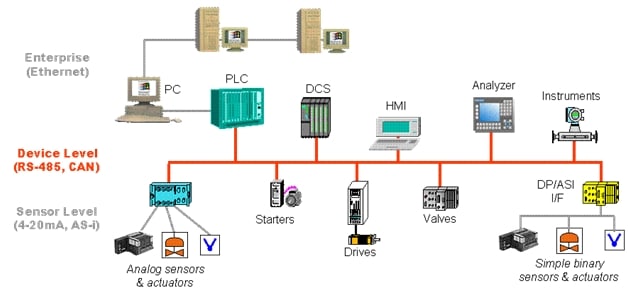
Enjoy and if you want your essays, debates, career stories being published in the blog, just send us a mail. We’d also be glad to hear more women voices :)
Industrial automation is the use of set technologies that automatically controls the operation of an industrial process. These technologies replace human thinking and require minimal human intervention.
A system using a computer and machine-aided activities improves productivity and reduce downtime. An automated method achieves superior performance albeit a mechanical operation.
Industrial Automation: what purpose?
Industrial tasks can be repetitive or dangerous making them unsuitable for humans. Some jobs require the operator to place the specimen by hand and mechanically move the crank to cut the part. The technique is prone to errors and can cause accidents.
Why not use a computerized numerical controlled (CNC) machine? CNC use computers to calculate, analyze, and cut the part with precision. The cut will be accurate with minimal human accidents.
Automating an industrial process has a high initial cost, but the return on investment takes a few months due to increase in productivity and energy savings. Example the use of an automated robot. The robot can efficiently work for twenty-four hours seven days a week.
Just like the CNC systems, the products will be high quality with no downtime enabling you to meet industry demands. The robots can work in environments that are dangerous to human health: welding an oil pipeline, palletizing or painting.
Industrial Automation Hierarchy
- Field Level
- Control Level
- Supervisory level
- Information level
It is the lowest level comprising of digital sensors and actuators. The digital sensors are devices that detect the changes in its environment such as pressure, temperature, and flow, etc. such sensors include thermocouples, pressures transmitters, flow meter.
The sensors then convert these parameters into digital signals. A communication network transmits the digital signal to the next higher level for monitoring.
Actuators are transducers that convert electrical signals into mechanical energy. They are responsible for moving or controlling the process. Examples include solenoid valves, pneumatic actuators, relays.
It contains automatic devices that receive the field parameters. Devices like Programmable Logic Controllers (PLC) delivers control functions based on the sensors inputs. It is a robust system that works under harsh industrial conditions and can be easily programmed to control or perform automatic processes.
Supervisory Control and Data Acquisition (SCADA) is the monitoring systems that control all the plant operations. The SCADA or either Distributed Control System (DCS) analyze the technical data and can run graphs or reports for the operator.
The system can perform calculations or process hundreds of data from a group of sensors and controllers.

Types of Industrial Automation | image : electricaltechnology.org
Enterprise/Information level is the highest level that comprises of the corporate information system. All automated management practices like accounting, design, and research, planning, sales and marketing and master production.
Below is a diagram showing some of the smart systems and how they interconnect with higher levels.

Industrial interface (IIF) transceivers used in Industrial Automation | image: archive.cnx.org
Emerging technologies
Industrial communication networks are crucial for transferring data to higher levels and vice versa. The use of middle-level software and computers that buffer, synchronize and translate sensors or controller information have become expensive and difficult to maintain.
Ethernet communication or fiber optic communication easily integrates with industrial plants. The interface simplifies the processes, eliminates performance drag, cost and software maintenance.
There is virtualization of middle-level software’s, and powerful computers are centralizing support and control.
Industrial Automation: effect on employment
I personally disagree with the perception automation replaces human beings. An efficient system requires the human contribution. The human being, however, requires technical skills to operate the system. The automated system will not be 100% capable.
The system may cause an error which if gone unnoticed would multiply causing costly mistakes. Human expertise is paramount in assessing complex sensory data like scents, sounds, machine language comprehension, and pattern recognition.
The operator is thus required to ensure flaws are identified and corrected on time. Automation reduces manual labor but does not render humankind useless.
Ally.
What do you think of Industrial Automation? Debate in the comments section below!
industrial automation is the controlled by the plc through scada
plc is an a programable software and scada is an a controller
Enjoyed reading the article above , really explains everything in detail, the article is very interesting and effective. Thank you and good luck in the upcoming articles.
Thanks for sharing such an informative post about industrial automation, it’s hierarchy and emerging technologies. For all my motion control and fluid control system and other industrial automation needs, I trust Excel Automation. Thanks!!